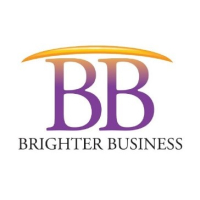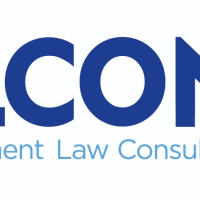Battery Retrofitting: Efficiency & Savings; Amplify Your Solar Installation
With advancements in technology amidst a growing environmental social awareness, many individuals and businesses are not only choosing solar energy for the first time, but are also seeking ways to enhance their existing solar installations. Retrofitting - the process of adapting an existing system with additional technologies, offers a pathway to increased efficiency, reliability, and performance.
Whether you are new to solar systems or looking to upgrade, understanding the differences between battery types, their functionalities, and how they integrate into your solar setup is important for optimising your energy solution. They come in various types, sizes, capacities, and life cycles, each with unique advantages and limitations.
Batteries > Evaluating Your Current Solar Installations > Importance of Proper Integration > Choosing the Right Inverters for Retrofitting > Selecting the Right Charge Controllers > Conclusion
Lead-Acid are traditional, cost-effective, typically larger and have a shorter lifespan compared to more modern technologies; suitable when space and weight are not major issues. Lithium-Ion are known for their efficiency and longevity, making them a popular choice in modern times. Lighter, compact, and have a higher energy density (can store more in a smaller space) - ideal for both residential and commercial applications where space and weight are considerations. While lead-acid and lithium-ion are most common, other types like nickel-cadmium and flow batteries are also used in specific applications. Each type has its own set of pros and cons, tailored to different needs and environments.
The size of a battery is directly related to its capacity, measured in kilowatt-hours (kWh). Your energy needs determine the capacity required. A battery's life cycle is defined by the number of complete charge-discharge cycles it can undergo before its capacity falls below 80% of its original capacity. Lithium-ion batteries typically offer more cycles than lead-acid, making them more cost-effective over time.
AC Batteries are integrated into systems where the energy stored is in the form of alternating current. This means the battery directly powers AC appliances or feeds back into the grid without needing conversion. They typically come with a built-in inverter to convert DC from the solar panels into AC for storage and use, ideal for systems primarily connected to the grid or where direct use of AC appliances is needed.
- Modularity: These systems are often modular, meaning you can start with a smaller system and add more capacity as needed without significant alterations to the existing setup.
- Simplicity in Installation and Maintenance: Since AC battery systems function independently of the solar PV system, they are typically easier to install and maintain. There is no need to interfere with the existing PV setup, making them an excellent choice for retrofitting.
- Potentially Higher Costs: The simplicity and flexibility of AC battery systems might come with higher initial costs, especially if an existing solar PV system requires an additional inverter to work with the AC battery system.
- Efficiency Losses: Both AC and DC battery systems experience energy losses during the charging and discharging process. In the case of AC, this includes the double conversion process (DC from the panels to AC, then back to DC for storage, and once again to AC for use).
note: even though AC experiences higher energy losses due to the double conversion process; some modern AC battery systems integrate Maximum Power Point Tracking (MPPT) technology to minimise these losses.
In contrast, DC batteries store energy in the form of direct current, which is the type of electricity produced by solar panels. They are more common in off-grid setups or systems where direct charging from solar panels to battery is preferred for efficiency.
- Higher Efficiency: DC systems can be more efficient than AC systems because they avoid one stage of energy conversion, reducing energy losses and increasing the overall efficiency of electricity usage.
- Cost-effectiveness: While the initial setup can be complex, DC systems can be more cost-effective in the long run due to higher efficiency and lower operational losses. Typically requiring only one solar inverter, which simplifies the installation process and reduces hardware costs. Homeowners can save on both initial setup costs and long-term maintenance
- Less Flexibility: Unlike AC systems, DC battery storage systems are usually designed to work as part of a specific setup. This can limit modularity and flexibility, making future expansions or modifications more complicated and potentially costly.
Evaluating your current solar energy system is a crucial first step in the retrofitting process. It ensures that any upgrades or changes align with your energy needs and system capabilities.
System Performance Analysis -Begin with a comprehensive review of your solar system's current performance involving checking the energy production data, typically accessible via your system's inverter or monitoring platform. Look for any trends of decreasing efficiency, which might indicate issues or the need for an upgrade.
Energy Needs Assessment - Assess your current and anticipated energy needs. Consider factors such as changes in household size, the addition of electric vehicles (DC to DC), or plans for home expansion. This step helps in determining the capacity required from your solar system moving forward.
Solar Performance Check - Conduct a physical inspection of your solar panels, wiring, and mounting hardware for any signs of wear, damage, or shading issues. Environmental factors like tree growth can affect the amount of sunlight reaching your panels. Evaluate the performance of your solar panels by comparing the energy they produce to their expected output based on their age and specifications. Significant discrepancies might indicate that it is time for cleaning, repairs, or replacement.
Regulatory and Incentive Research - Stay informed about local regulations and incentives for solar energy systems. As of February 2024 - 0% VAT on upgrading to more efficient systems, additional storage or installing a standalone setup.
Budget and Consultation with Professionals - Consider consulting with a solar energy professional to get an expert assessment of your system's condition and potential upgrades. They can offer insights into the latest technologies and how they could fit into your existing setup and budget. Factor in initial costs versus long-term savings and benefits.
Importance of Proper IntegrationWhether integrating AC or DC—into your solar energy system requires careful consideration to ensure compatibility and efficiency.
- Compatibility Check - Verify that the batteries you consider are compatible with your current system, especially the inverter and charge controller. This compatibility is crucial for the efficient transfer and storage of energy.
- Optimal Configuration for Energy Storage - Determine whether an AC or DC battery system aligns better with your needs. AC systems might be more suitable for homes primarily using AC appliances or in situations where there is significant distance from the inverter, while DC systems could offer efficiency advantages for direct DC power usage or in certain off-grid setups.
- Warranty and Support: Mixing components from different manufacturers can affect warranty coverage. Check the terms provided by both the battery and inverter manufacturers to ensure that integrating different brands does not void your warranties.
- Balance of System (BOS) Components: Other system components, such as cabling, connectors, and mounting hardware, while less complex, still require compatibility checks. For instance, different manufacturers may use unique connector types that could impact the assembly and electrical safety of the entire system.
Inverters convert direct-current solar energy into usable electricity and yours could potentially integrate new batteries. When retrofitting, the choice between different types of inverters depends on your system's current setup and future energy goals.
- String Inverters: Best for systems with solar panels exposed to similar lighting conditions. When adding batteries, consider if a separate battery inverter is needed or if a hybrid inverter could consolidate your system's components. String inverters are generally less expensive than other types, making them an attractive option for smaller installations.
- Microinverters: Ideal for panels in varying shading conditions. If your system uses microinverters and you are adding batteries, you will likely integrate a separate battery management system and inverter due to the decentralised nature of microinverters.
- Hybrid Inverters: These inverters are specifically designed for systems integrating solar panels with battery storage. They manage both the conversion of solar energy into electricity and the charging and discharging of batteries. Streamlined choice for both AC and DC centric systems, simplifying installation and improving efficiency. More cost-effective in the long run, initial cost for a hybrid inverter can be higher than for a traditional inverter.
Charge controllers are designed to manage the flow of energy from the solar panels to the batteries, ensuring batteries are charged correctly and efficiently; whilst being protected from overcharging.
- PWM (Pulse Width Modulation) Charge Controllers: More cost-effective and suitable for smaller systems or systems with a low power intake. Best for systems where voltage of the solar panels is closely matched to the battery's voltage.
- MPPT (Maximum Power Point Tracking) Charge Controllers: More efficient, especially in varied or suboptimal lighting conditions. MPPT controllers adjust their input to deliver the maximum power possible to the battery. They are ideal for larger systems or systems in areas with significant cloud cover or shading issues. May entails higher upfront costs, impacting the initial budget. However, their ability to optimise each panel's output independently justifies the initial investment over time.
note: the cost of microinverters has been decreasing in recent years, making them a more affordable option.
ConclusionThrough the thoughtful selection of batteries, inverters, charge controllers, and management systems, individuals and businesses can substantially enhance the performance and longevity of their solar energy installations. Whether it is achieving energy independence at home or optimising operational costs in commercial settings; retrofitting offers a tangible pathway to a more sustainable and resilient energy future. A future where renewable energy systems are as adaptive and dynamic as the needs they serve.
Transform your solar setup and reap the benefits. Reach out to Clever Energy Midlands and discover how essential retrofitting will seem to be.
More Articles
Understanding the Importance and Types of Emergency...
Labour’s new Employment Rights Bill: challenges employers...
Would you like to promote an article ?
Post articles and opinions on Professionals UK
to attract new clients and referrals. Feature in newsletters.
Join for free today and upload your articles for new contacts to read and enquire further.




